Gopal K Prabhu
age ~51
from Milpitas, CA
- Also known as:
-
- Gopal L Prabhu
- Krishna Prabhu Gopal
- Phone and address:
- 256 Shimmer Ct, Milpitas, CA 95035
Gopal Prabhu Phones & Addresses
- 256 Shimmer Ct, Milpitas, CA 95035
- 755 Capitol Ave, Milpitas, CA 95035
- 600 Denton Cir, Euless, TX 76039
- 3833 Walnut Dr, Bedford, TX 76021
- Loma Linda, CA
- College Sta, TX
- San Jose, CA
- Sunnyvale, CA
- Bryan, TX
- Santa Clara, CA
Work
-
Company:It provenJun 2011
-
Position:Senior it manager
Education
-
School / High School:Texas A&M University- College Station, TX1999
-
Specialities:MS in BioEngineering
Skills
IT Management Multisite Operations Qua...
Languages
English
Industries
Information Technology And Services
Name / Title
Company / Classification
Phones & Addresses
IT/Internet Support
Applied Materials, Inc
Mfg Misc Industry Machinery
Mfg Misc Industry Machinery
974 E Arques Ave, Sunnyvale, CA 94085
(408)7275555, (408)8309703, (408)5846789
(408)7275555, (408)8309703, (408)5846789
Resumes

Gopal Krishna Prabhu
view sourceLocation:
256 Shimmer Ct, Milpitas, CA 95035
Industry:
Information Technology And Services
Work:
Cisco
Project Manager It
Keane
Principal Consultant
At&T
Program Manager
Project Manager It
Keane
Principal Consultant
At&T
Program Manager
Education:
Texas A&M University 1999
Master of Science, Masters Manipal Academy of Higher Education 1996
Bachelors, Bachelor of Science
Master of Science, Masters Manipal Academy of Higher Education 1996
Bachelors, Bachelor of Science
Skills:
Sdlc
Software Project Management
Waterfall
Cross Functional Team Leadership
Visio
Pmp
Testing
Pmo
Vendor Management
Management
Integration
Business Analysis
Program Management
Software Project Management
Waterfall
Cross Functional Team Leadership
Visio
Pmp
Testing
Pmo
Vendor Management
Management
Integration
Business Analysis
Program Management
Languages:
English

Gopal Prabhu Milpitas, CA
view sourceWork:
IT Proven
Jun 2011 to Present
Senior IT Manager Cisco
San Jose, CA
2008 to Jul 2011
Project Manager Cisco
San Jose, CA
2008 to Jul 2011
Project Manager Keane Inc
2007 to 2008
Principal Consultant AT&T
San Ramon, CA
2006 to 2007
Program Manager On Command Corporation
San Jose, CA
2000 to 2006
Member Technical Staff
Jun 2011 to Present
Senior IT Manager Cisco
San Jose, CA
2008 to Jul 2011
Project Manager Cisco
San Jose, CA
2008 to Jul 2011
Project Manager Keane Inc
2007 to 2008
Principal Consultant AT&T
San Ramon, CA
2006 to 2007
Program Manager On Command Corporation
San Jose, CA
2000 to 2006
Member Technical Staff
Education:
Texas A&M University
College Station, TX
1999
MS in BioEngineering Manipal Institute Of Technology
1996
BS in Biomedical Engineering
College Station, TX
1999
MS in BioEngineering Manipal Institute Of Technology
1996
BS in Biomedical Engineering
Skills:
IT Management Multisite Operations Quality Assurance Offshore Development ITIL Agile Development Project Management Change Control Board PMO Release Management Product Development Client/Vendor Relations
Us Patents
-
Free-Standing Metallic Article For Semiconductors
view source -
US Patent:8569096, Oct 29, 2013
-
Filed:Mar 13, 2013
-
Appl. No.:13/798124
-
Inventors:Robert Brainard - Sunnyvale CA, US
Arvind Chari - Saratoga CA, US
Alejandro de la Fuente Vornbrock - San Carlos CA, US
Venkatesan Murali - San Jose CA, US
Gopal Prabhu - San Jose CA, US
Venkateswaran Subbaraman - San Jose CA, US
Dong Xu - Fremont CA, US -
Assignee:GTAT Corporation - Nashua NH
-
International Classification:H01L 21/00
-
US Classification:438 66, 438 72, 257E31124
-
Abstract:A free-standing metallic article, and method of making, is disclosed in which the metallic article is electroformed on an electrically conductive mandrel. The mandrel has an outer surface with a preformed pattern, wherein at least a portion of the metallic article is formed in the preformed pattern. The metallic article is separated from the electrically conductive mandrel, which forms a free-standing metallic article that may be coupled with the surface of a semiconductor material for a photovoltaic cell.
-
Method For Three-Dimensional Packaging Of Electronic Devices
view source -
US Patent:8629061, Jan 14, 2014
-
Filed:Jun 7, 2012
-
Appl. No.:13/490460
-
Inventors:Venkatesan Murali - San Jose CA, US
Arvind Chari - Saratoga CA, US
Gopal Prabhu - San Jose CA, US -
Assignee:GTAT Corporation - Nashua NH
-
International Classification:H01L 21/768
-
US Classification:438667, 257E21585
-
Abstract:An interposer is fabricated from a lamina. A donor body is provided, ions are implanted into a first surface of the donor body to define a cleave plane, a temporary carrier is separably contacted to the donor body, and the lamina is cleaved from the donor body. The lamina has front surface and a back surface, with a thickness from the front surface to the back surface. A via hole is formed in the lamina, where the via hole extends through the thickness of the lamina. The temporary carrier is removed from the lamina, and the lamina may be fabricated into an interposer for three-dimensional integrated circuit packages.
-
Method For Preparing A Donor Surface For Reuse
view source -
US Patent:20100273329, Oct 28, 2010
-
Filed:Sep 10, 2009
-
Appl. No.:12/557379
-
Inventors:Gopal Prabhu - San Jose CA, US
Kathy J. Jackson - Felton CA, US
Orion Leland - Fremont CA, US
Aditya Agarwal - Sunnyvale CA, US -
Assignee:TWIN CREEKS TECHNOLOGIES, INC. - San Jose CA
-
International Classification:H01L 21/304
-
US Classification:438691, 257E21237
-
Abstract:A donor wafer, for example of silicon, has an irregular surface following cleaving of a lamina from the surface, for example by exfoliation following implant of hydrogen and/or helium ions to define a cleave plane. Pinholes in the lamina leave column asperities at the exfoliated surface of the donor wafer, and the beveled edge may leave an edge asperity which fails to exfoliate. To prepare the surface of the donor wafer for reuse, mechanical grinding removes the column and edge asperities, and minimal additional thickness. Following cleaning, growth and removal of an oxide layer at the surface rounds remaining peaks. The smoothed surface is well adapted to bonding to a receiver element and exfoliation of a new lamina. A variety of devices may be fabricated from the lamina, for example a photovoltaic cell.
-
Microwave Anneal Of A Thin Lamina For Use In A Photovoltaic Cell
view source -
US Patent:20110143480, Jun 16, 2011
-
Filed:Dec 11, 2009
-
Appl. No.:12/636704
-
Inventors:Mohamed M. Hilali - Sunnyvale CA, US
Murali Venkatesan - Santa Clara CA, US
Gopal Prabhu - San Jose CA, US
Zhiyong Li - San Jose CA, US -
Assignee:TWIN CREEKS TECHNOLOGIES, INC. - San Jose CA
-
International Classification:H01L 21/322
-
US Classification:438 58, 438458, 257E21317
-
Abstract:A cleave plane is defined in a semiconductor donor body by implanting ions into the wafer. A lamina is cleaved from the donor body, and a photovoltaic cell is formed which comprises the lamina. The implant may cause some damage to the crystal structure of the lamina. This damage can be repaired by annealing the lamina using microwave energy. If the lamina is bonded to a receiver element, the receiver element may be either transparent to microwaves, or may reflect microwaves, while the semiconductor material absorbs the microwaves. In this way the lamina can be annealed at high temperature while the receiver element remains cooler.
-
Back-Contact Photovoltaic Cell Comprising A Thin Lamina Having A Superstrate Receiver Element
view source -
US Patent:20120192935, Aug 2, 2012
-
Filed:Mar 21, 2012
-
Appl. No.:13/425870
-
Inventors:Steven M. Zuniga - Soquel CA, US
Christopher J. Petti - Mountain View CA, US
Gopal Prabhu - San Jose CA, US -
Assignee:Twin Creeks Technologies, Inc. - San Jose CA
-
International Classification:H01L 31/0352
H01L 31/02 -
US Classification:136255, 438 68, 257E3111
-
Abstract:A method to fabricate a photovoltaic device includes forming first and second contact regions at the first surface of a semiconductor donor body. A cleave plane may be formed by implanting ions into the donor body, and a lamina that includes the contact regions is cleaved from the donor body at the cleave plane. The first surface of the lamina may be contacted with a temporary support and fabricated into a photovoltaic device, wherein the lamina comprises the base of the photovoltaic device.
-
Method For Forming Flexible Solar Cells
view source -
US Patent:20130199611, Aug 8, 2013
-
Filed:Feb 5, 2012
-
Appl. No.:13/366338
-
Inventors:Venkatesan Murali - San Jose CA, US
Gopal Prabhu - San Jose CA, US
Orion Leland - Fremont CA, US -
Assignee:Twin Creeks Technologies, Inc. - San Jose CA
-
International Classification:H01L 31/0376
H01L 31/18 -
US Classification:136258, 438 96, 257E31047
-
Abstract:The invention provides for a semiconductor wafer with a metal support element suitable for the formation of a flexible or sag tolerant photovoltaic cell. A method for forming a photovoltaic cell may comprise providing a semiconductor wafer have a thickness greater than 150 μm, the wafer having a first surface and a second surface opposite the first and etching the semiconductor wafer a first time so that the first etching reduces the thickness of the semiconductor wafer to less than 150 μm. After the wafer has been etched a first time, a metal support element may be constructed on or over the first surface; and a photovoltaic cell may be fabricated, wherein the semiconductor wafer comprises the base of the photovoltaic cell.
-
Multi-Layer Metal Support
view source -
US Patent:20130200496, Aug 8, 2013
-
Filed:Jul 26, 2012
-
Appl. No.:13/558826
-
Inventors:Venkatesan Murali - San Jose CA, US
Gopal Prabhu - San Jose CA, US -
Assignee:TWIN CREEKS TECHNOLOGIES, INC. - San Jose CA
-
International Classification:H01L 21/30
H01L 29/02
H01L 21/20 -
US Classification:257618, 438652, 438482, 257E21295, 257E2109, 257E29002
-
Abstract:The invention provides a method of forming an electronic device from a lamina that has a coefficient of thermal expansion that is matched or nearly matched to a constructed metal support. In some embodiments the method comprises implanting the top surface of a donor body with an ion dosage to form a cleave plane followed by exfoliating a lamina from the donor body. After exfoliating the lamina, a flexible metal support that has a coefficient of thermal expansion with a value that is within 10% of the value of the coefficient of thermal expansion of the lamina is constructed on the lamina. In some embodiments the coefficients of thermal expansion of the metal support and the lamina are within 10% or within 5% of each other between the temperatures of 100 and 600 C.
-
Multi-Layer Metal Support
view source -
US Patent:20130200497, Aug 8, 2013
-
Filed:Jul 26, 2012
-
Appl. No.:13/558836
-
Inventors:Venkatesan Murali - San Jose CA, US
Gopal Prabhu - San Jose CA, US
Christopher J. Petti - Mountain View CA, US -
Assignee:TWIN CREEKS TECHNOLOGIES, INC. - San Jose CA
-
International Classification:H01L 21/20
H01L 29/06 -
US Classification:257618, 438478, 257E29005, 257E2109
-
Abstract:The invention provides a method of forming an electronic device from a lamina that has a coefficient of thermal expansion that is matched or nearly matched to a constructed metal support. In some embodiments the method comprises implanting the top surface of a donor body with an ion dosage to form a cleave plane followed by exfoliating a lamina from the donor body. After exfoliating the lamina, a flexible metal support that has a coefficient of thermal expansion with a value that is within 10% of the value of the coefficient of thermal expansion of the lamina is constructed on the lamina. In some embodiments the coefficients of thermal expansion of the metal support and the lamina are within 10% or within 5% of each other between the temperatures of 500 and 1050 C.
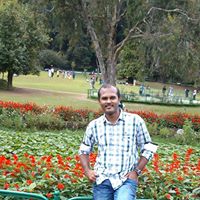
Gopal Prabhu
view source
Prabhu Gopal
view source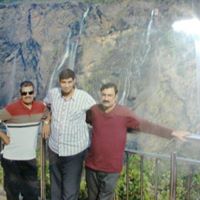
Gopal Krishna Prabhu
view source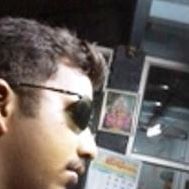
Gopal Krishna Prabhu
view source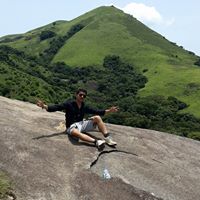
Gopal Prabhu
view source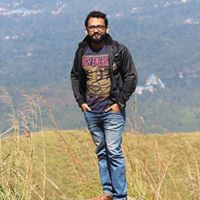
Gopal Prabhu
view source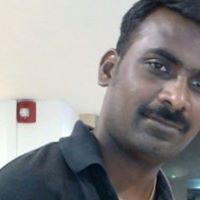
Gopal Prabhu
view source
Gopal Prabhu
view sourceYoutube
Classmates

Gopal Prabhu, Univ of Tex...
view sourceGoogleplus

Gopal Prabhu

Gopal Prabhu
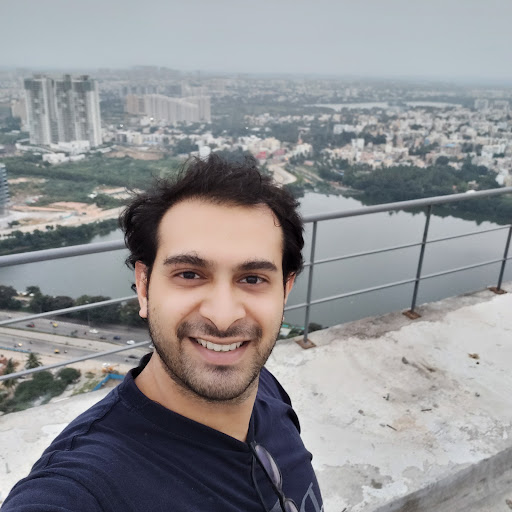
Gopal Prabhu

Gopal Prabhu

Gopal Prabhu

Gopal Prabhu
Get Report for Gopal K Prabhu from Milpitas, CA, age ~51












